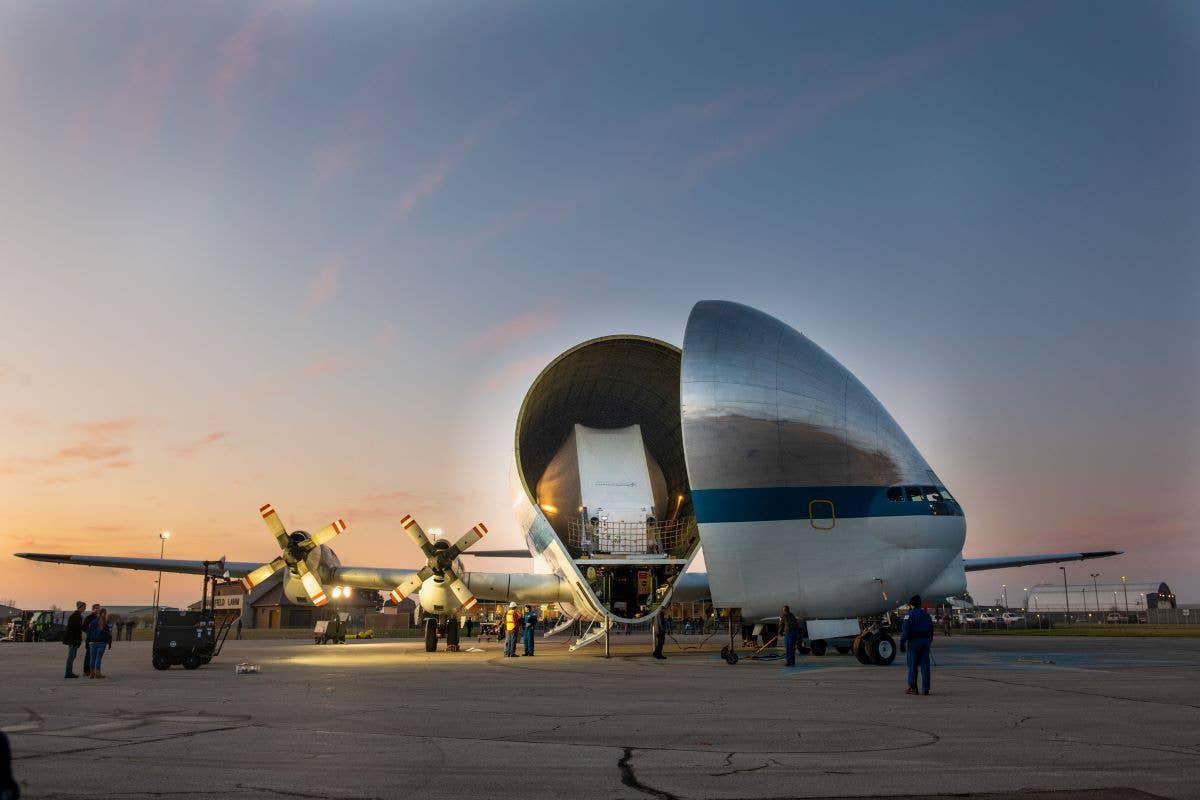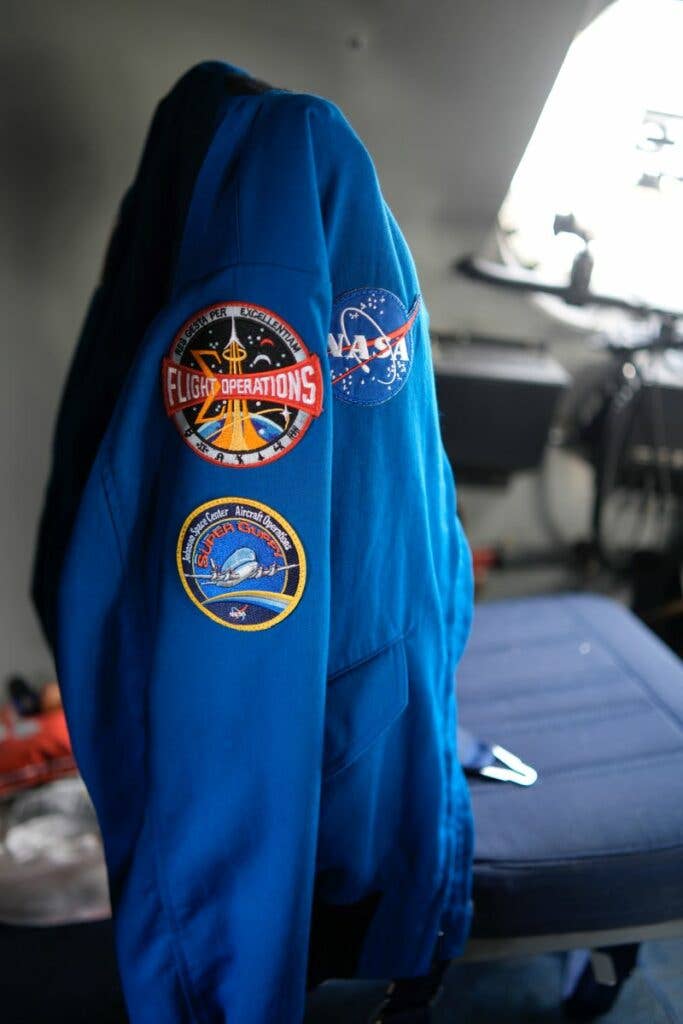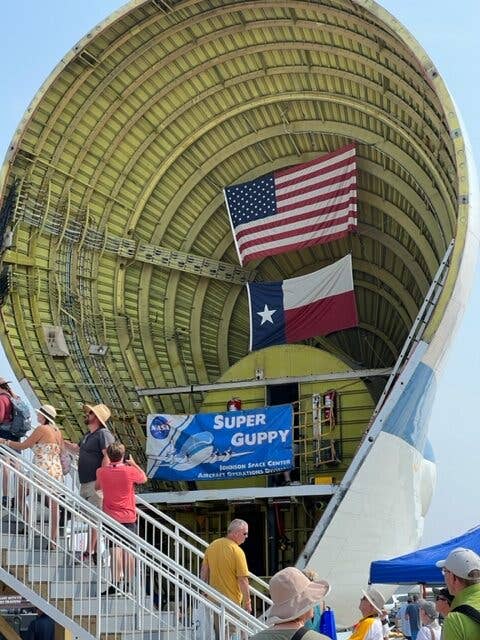Inside NASA’s Super Guppy
The massive cargo aircraft was designed in the 1960s specifically to handle oversized loads, like the body sections of the Saturn V rocket.

In November 2019, NASA’s Super Guppy arrived at Mansfield Lahm Airport with the Orion spacecraft for Artemis I aboard. [Credit: NASA/Bridget Caswell]
On July 20, 1969, the first human being set foot on the moon. It never would have happened without the assistance of NASA's Super Guppy. The turboprop-powered aircraft was designed in the 1960s specifically to handle oversized loads—mainly the body sections of the Saturn V rocket.
NASA's Ray Heineman, director of flight operations and one of the pilots for the behemoth aircraft, gave FLYING a cockpit tour of the airframe that goes back to the early days of the space race—and is still flying.
According to Heineman, the massive cargo aircraft substantially reduced the time it took to transport large rocket parts from the West Coast to Cape Kennedy in Florida. At the time, the parts had to be loaded on barges to get through the Panama Canal or Gulf of Mexico then loaded onto trucks.


"It often took 18 days," said Heineman, noting that was too long when you were trying to get a rocket into space.
In 1961, California-based Aero Spaceline Industries highly modified a KC-97 Stratotanker. The giant tanker looked an awful lot like a pregnant fish—at the time, guppies were the aquatic pet of choice in America—and the name Pregnant Guppy was bestowed on the aircraft, which had the greatest cargo capacity of any aircraft ever built.
The interior of the airplane was 19 feet wide, perfect for carrying the second stage of the Saturn V rocket, which was the backbone of the Apollo program.
"Instead of taking 18 days by barge to get to the cape, the Pregnant Guppy was able to do it in 18 hours," said Heineman.
Super Guppy Ops
The Super Guppy boasts a cargo area that is 25 feet in diameter and 111 feet long. Chances are, if NASA flies it or sends it into space, it will fit in there.
According to Heineman, the size and shape of the Super Guppy make for some interesting flight characteristics, Although the cockpit resembles that of a KC-97 and is very reminiscent of the Boeing B-29 (the yoke and the rudder pedals in particular), the height of the fuselage gives the pilot a vertical center of gravity as well as a longitudinal one.
“We have a crosswind component of about 20, and we try to avoid gusts,” he said, adding that this aircraft requires a flight engineer and two pilots. '"And the pilots are flying all the time, all the way to the ground."
Open Wide
The Super Guppy nose is hinged, allowing it to open 110 degrees for ease of loading and unloading oversized cargo. According to NASA specs, a control lock and disconnect system at the fuselage break allows the nose to be opened and closed without disrupting the flight or engine control rigging.
A 10-watt electric motor actuates the hinge, and you have to be careful to park the airplane so it isn't opening into the wind, according to Heineman, because the nose has so much surface area it is like a sail—and you’d be bucking a headwind.
"It takes 30 to 40 minutes to open the nose," he said.
Closing the nose is also done carefully with checklists and double checks to make sure the hinge is secure and all the control cables are functioning normally.
Flying the aircraft is an exercise in patience.
"Like any airplane, you roll into a turn and add rudder and then you wait because that control input has to travel down the cables, the cables stretch, and then the aircraft moves,” Heineman said. “You have to be patient and always keep flying it."
The Super Guppy is on display at the show center at EAA AirVenture 2023 in Oshkosh, Wisconsin.

Sign-up for newsletters & special offers!
Get the latest FLYING stories & special offers delivered directly to your inbox






